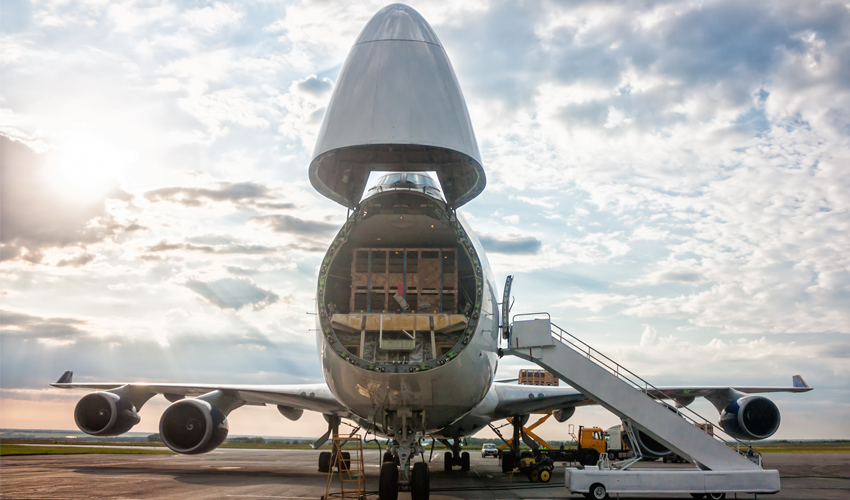The next two years should see continued strides in the aviation industry’s recovery with sine sectors faring better than others. Notably, passenger airlines are expected to return to profitability in 2023, however, business travel will be impacted by rising air fares on key business routes. Cargo would see though, declining volumes, yields, and profits.
IATA Economics Forecasting Aviation’s Recovery to 2019 Traffic Levels in 2024
According to IATA Economic’s projections, the aviation industry can expect a return to 2019 traffic levels in 2024. The organization also predicted that North America will be the first to regain 2019 performance levels followed by Europe, Latin America, and the Middle East. As for Asia Pacific, it won’t see its return to 2019 traffic levels until 2025. These projections are cited in the IATA/TE Passenger Forecast. Notably, if these projections prove accurate, the aviation industry will have bounced back from its worst crisis – the pandemic – within four years at a recovery rate of five times faster than the growth it has experienced over the past 20 years.
IATA Economics notes that aviation is historically a resilient industry as evidenced by its past historical performance. It noted that over the past 50 years up until the pandemic of 2019, the international air transport industry had been experiencing a 20-fold increase in annual Revenue Passenger Kilometers (RPKs). Over the same five decades, annual RPKs ran across a smooth growth trend that demonstrated an RPK trajectory with a doubling time of 12 years on average.
Revenue growth was impacted by major global events such as the Gulf War which brought on -4.6% year-on-year (YoY) RPKs, the 9/11 terrorist attack on the U.S. which resulted in a -2.9% YoY RPKs, and the global financial crisis causing a -1.2% YoY RPKs. The Covid-19 pandemic, however, caused an unprecedented effect on aviation resulting in a decrease of 65.8% in annual RPKs between 2019 and 2020, returning to 1999 figures. By September 2022, progress was made, however, RPKs were still at just 74% of pre-pandemic levels when compared to September 2019.

Air Cargo Under Pressure?
The International Air Transport Association (IATA) Director Willie Walsh recently said, “As we look to 2023, the financial recovery will take shape with a first industry profit since 2019. That is a great achievement considering the scale of the financial and economic damage caused by government-imposed pandemic restrictions. But a $4.7 billion profit on industry revenues of $779 billion also illustrates that there is much more ground to cover to put the global industry on a solid financial footing.”
IATA noted that the $4.7 billion in profits cited by Walsh equates to a 0.6% net profit margin which is the first since 2019 when the industry produced $26.4 billion. In 2022, IATA said that airlines are expected to record a loss of $6.9 billion following a $42 billion deficit in 2021 and a $137.7 billion loss in 2020. Airlines’ improved profits are being attributed to improved yields and cost controls relating to rising fuel prices.
One sector that IATA is not encouraged about is cargo, which was a bright spot for the industry previously, but which is now projected to have a difficult 2023. In 2022, IATA expects the cargo sector to attain revenues of $201.4 billion which are comparable to those of 2021 and more than double the 2019 revenues of $100.8 billion. Next year, however, revenues from cargo airlines are projected to be $149.4 billion, or $52 billion less than 2022 revenue projections.
In discussing the overall industry and despite cargo’s anticipated challenges in the year ahead, Walsh noted, “Many airlines are sufficiently profitable to attract the capital needed to drive the industry forward as it decarbonizes. But, many others are struggling for a variety of reasons. These include onerous regulation, high costs, inconsistent government policies, inefficient infrastructure, and a value chain where the rewards of connecting the world are not equitably distributed.”
Rising Air Fares Forecast for Key Business Routes
The American Express Global Business Travel’s Air Monitor report for 2023 is projecting higher air fares on routes between Europe and North America, as well as Europe and Asia. Specifically, routes between Europe and North America are forecasted to experience rate hikes of 3.7% and intra-European flights are projected to see even higher increases of 6% in business cabins and 5.5% in economy class. This is being attributed to “airline capacity recovery lags behind the resurgence of demand.” As for air fares between Europe and Asia, the Amex report is projecting price increases of 12% in economy and 7.6% in business cabins. Australian domestic flights are expected to see fare increases of 19.4% in business class.
Among the significant trends contributing to fare increase cited by Amex in the Air Monitor report were airline capacity, inflation, the impact of foreign exchange rates, and fuel surcharges. Also noted was that the steepest increases are most likely to be experienced in regions that have been slower to loosen Covid-19 pandemic restrictions such as Asia-Pacific. As an example, Hong Kong was cited as being one of the slowest regions to ease their pandemic restrictions, as evidenced by the late September lifting of its requirement for international visitors to undergo hotel quarantine.
Amex Global Business Travel’s Vice President, global business consulting stated, “The volatile economic environment makes it challenging for travel teams to plan ahead. We want to equip our clients with the insights they need to build strong travel programmes.”
> What do you think what is coming next for aviation in 2023? Let us know in the comments below!





0 comments on “Aviation Wrap-Up December 2022”